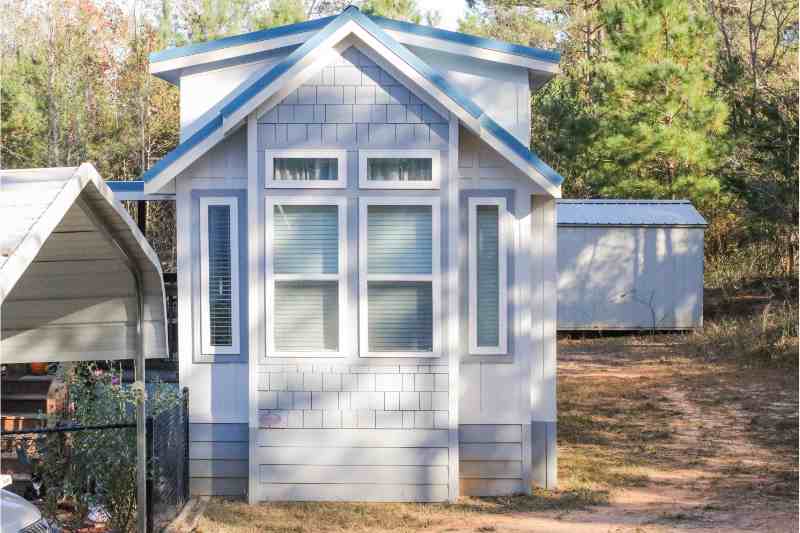
Disclaimer: This content is for informational purposes only, you should not construe any such information as legal, tax, investment, financial, or other advice. Nothing contained on our site constitutes a solicitation, recommendation, endorsement, or offer by ButterflyMX or any third-party service provider. ButterflyMX is not a financial adviser. You should always seek independent legal, financial, taxation, or other advice from a licensed professional.
Takeaways
- Real estate investment involves buying, selling, and renting different types of property to make a profit.
- A real estate investor must find financing, research a property, buy or develop a property, and then manage a property.
- Real estate investment companies can include REITs and real estate syndications.
- Types of real estate investing properties include senior housing, student housing, multifamily properties, and office buildings.
Real estate investing can be a highly rewarding endeavor that requires both as much and as little effort as you want to put into it. There are many different types of real estate investments and not every investment type will be a great fit for you.
In this post, we’ll go over some basic questions that you may have about investing in real estate. Next, we’ll go over how you can invest in real estate. Finally, we’ll review a few of the different types of real estate that you can invest in.
This post covers:
- What is real estate investing?
- How to invest in rental property
- Real estate investing groups
- Online real estate platforms to look out for
- 8 types of real estate investment properties
What is real estate investing?
Real estate investing can involve either buying, developing, selling, or renting out property to make a return on investment. Real estate investments can be as simple as buying, renovating, and reselling a house (which is known as house-flipping).
However, they can also be more complex and time-consuming when buying and managing multiple multifamily and commercial properties in order to earn rental income.
Is it a good idea to invest in real estate?
Real estate investments are a good idea if you have enough capital to support the phases of your investment. The real estate market is consistently growing.
Furthermore, 36% of Americans rent, which means rental properties will always be in demand. The only reason that real estate investing might be a bad idea is if your personal finance doesn’t include the funds to invest.
Is $5,000 enough to invest in real estate?
$5,000 can be enough to invest in some real estate as a down payment, depending on the financial loans you manage to secure. However, you’ll likely want to have access to more funding in order to avoid taking unnecessary risks with your personal finance. Owning real estate likely involves more startup funds.
$5,000 and similar low amounts are probably best put towards real estate projects such as REITs (real estate investment trusts), which we explore a little further along in this post.
Remember: all real estate exposure is worthwhile, and you can still use these funds (just not in the way that you might be hoping.)
How to invest in rental property
One of the best ways to invest in a rental property is to purchase either a single-family, multifamily, or commercial property and rent out individual units for a monthly or yearly rent. Your ROI (return on investment) will come from rental income.
When investing in rental property, there are a number of crucial steps to take:
- Find a worthwhile property. You can most commonly do this by working with a real estate agent or by searching online. During this phase, you will also determine what type of rental (or investment) property suits you best. This involves deciding whether you want to become involved with commercial real estate or residential real estate. Real estate investment software helps you research neighborhoods and property types in order to find the maximum possible ROI.
- Secure financing. Whether financing involves securing a conventional mortgage or pooling your money with a partner, ensure you have all of your financing figured out before you begin searching for properties.
- Purchase/develop your property. As you might expect, developing a property can take months. However, purchasing a property can also take up to three months from when you put an offer in for a property. Be sure to account for just how long this phase can last.
- Manage your property. Your responsibilities as an investor don’t end the moment your purchase/development is complete. You now have to manage your property and get it ready for renters. This can involve making renovations and improvements, as well as marketing your property to potential residents. You may want to look into using a property management company.
Learn how to invest in multifamily real estate:
How to invest in real estate with no money?
When investing in real estate with very little start-up capital, you will have to become a savvy investor and rely on creative financing if you want to start investing.
Creative financing can involve:
- Real estate crowdfunding
- Borrowing substantial capital from private lenders
- Forming partnerships with multiple real estate investors and embarking on fractional ownership
How to invest in real estate for passive income?
Rental properties of all types, such as college-town rentals, are one of the best ways to earn passive income when real estate investing. If you hire a property manager, you won’t have to worry about the day-to-day operations at your property.
Investing in real estate stocks such as REITs is also a great way to earn passive income.
Real estate investing groups
There are ways to get involved in real estate investing without having to physically purchase — or handle — any property at all. One of the best investment strategies is to go through a real estate investing group.
The two most common ways to do this are through:
- Real estate syndications. A syndication is formed when a group of investors converges to develop a physical property and profit from selling the property. Usually, the properties in question are larger multifamily or commercial real estate. One person (the sponsor) is in charge of putting the investment together while the other investors put in a certain amount of mutual funds. Syndications often require you to have a yearly income of $200,000. So, they have a pretty high bar for entry.
- REITs (real estate investment trusts). A REIT is a company that buys a rental property and manages it. By investing stock in a real estate investment trust, you open yourself to receiving profits from rental income. Multifamily REITs are normally stable during all phases of the real estate cycle, which makes them mostly safe investments for stable cash flow. Publicly traded REITs are available to invest in the same way you would invest in the stock market. With real estate investing groups, you don’t have to worry about a monthly payment on a mortgage or interest rates.
How to invest in real estate through stocks?
Investing in real estate through stocks most commonly involves buying stock in REITs. Recent data shows that REIT companies own over 535,000 properties and over 15 million acres of land.

Online real estate platforms for investing
Platforms for real estate on the internet often take the form of software that provides you with tools to extensively research the real estate market.
Online platforms for real estate are beneficial because they:
- Show you how to calculate a good initial investment.
- Help you decide on which development projects are worth pursuing.
- Provide beginner knowledge for new investors and real estate developers who are looking to start investing in real estate assets.
- Provide high-quality data such as up-and-coming areas, real estate values, local market data, undervalued properties, price appreciation, and prospects for potential renters.
Online real estate platforms worth checking out are:
- Flipperforce. As the name implies, this resource specializes in house flipping. This software makes flipping houses easier by providing long-term calculations on home values, capital gains from sales, and what will be required when you have to pay taxes. A standout of this software is that it gives repair and renovation estimates.
- Property Evaluator. This resource helps you make informed decisions to predict what will be a good investment when buying a property. It offers a detailed history of your intended property, neighborhood, and similar properties. This data goes back over a decade in some cases, depending on the location. This software also takes the form of an app and provides information on possible capital gains that you can attain.
- Propstream. This software focuses specifically on wholesaling real estate. It provides comprehensive data and calculations on any property type, as well as comparisons of additional properties. It also provides marketing features and estimates on after-tax profits.
8 types of real estate investments
Different types of investment properties come with their own risk and reward systems. Some properties are better for beginner investors, while others are better suited for investors with more experience. Almost all of the following properties provide great tax benefits and are an essential step if you want to build wealth.
Your options for real estate investment properties include:
- Senior housing
- Short-term rental
- Multifamily properties
- Commercial buildings
- Student housing
- Tiny homes
- Mobile home park investing
- Sale leaseback agreements
1. Senior housing
Senior housing includes a number of different property types that house senior citizens.
Types of senior housing include:
- Assisted living facilities
- Retirement homes
- Nursing homes
Benefits of senior housing include:
- Consistent demand. Everybody gets old, and a large number of elderly people need to seek senior housing.
- Safe investment. Senior housing is often resistant to changes in the real estate cycle.
Senior housing does have a few cons, including:
- Staffing. Most senior housing properties require highly trained professionals. Keeping these professionals staffed at all times can be challenging.
- Regulations. Because many senior housing properties are also medical facilities, they face heavy regulations that you, as the property owner, must be aware of.
Ultimately, senior housing investments can involve a lot of work and planning. As such, they’re for highly experienced investors.
2. Short-term rental
Short-term investment rentals are properties that are rented nightly or weekly, with Airbnb rentals being a top example. They are a great idea when investing in a rental property for beginners.
Short-term rentals can involve investing in real estate with no money if you rent out a spare room at your otherwise single-family residence. They can also be more complex if you purchase or develop a four-bedroom beachfront property and rent out each room individually.
The primary cons of short-term rentals are that you have to deal with a high volume of different renters, often with minimal background checks. This can lead to residents who don’t respect your property or rules and cause damage. However, the easy profits that you stand to make can offset this potential risk.
3. Multifamily properties
Multifamily properties are one of the top properties for many investors. Why?
- Rental income. You can’t beat a steady flow of capital from multiple residents.
- Constant demand. Millions of Americans rent and are seeking units to rent. Multifamily properties as a whole are also always in high demand and are perfect to flip and resell.
- Endless renovations. Multifamily properties have numerous ways that they can be steadily renovated and improved upon, from amenities such as gyms and smart laundry rooms to security technology such as access control systems and keypad door locks.
Multifamily properties can consist of two-unit duplexes and also 200-unit high-rise apartments. There are tons of legal loopholes that can work multifamily properties in your favor, such as making a unit in a multifamily building your primary residence. No matter your financial situation, you can surely invest in a multifamily investment property on some level.

4. Commercial buildings
Similar to multifamily properties, most commercial real estate buildings offer units (or floors) for rent to companies for offices. Companies pay rent on a set basis. Because of how much bigger commercial spaces are compared to apartments, you can typically charge much more for rent.
A con of commercial spaces, however, is that they’re less in demand than multifamily rental units. This is especially true with remote work being more popular than ever. However, there will always be businesses that need in-person employees. Bigger commercial deals can result in a ton of capital gains if planned out accordingly.
Additionally, there are numerous ways real estate investors can make commercial properties more appealing to employers, such as featuring cutting-edge building management technology and open floor plans.
5. Student housing
Thanks to record attendance at colleges and universities around the country, student housing is in constant demand. Student housing investments are similar to multifamily investments in that they involve purchasing a property with multiple rental units.
However, the benefits of catering specifically to students are massive.
The benefits of investing in student housing include:
- Consistent students seeking to rent as classes graduate and new students take their place.
- Most students have their parents co-sign their lease, guaranteeing steady income.
- Organized lease cycles that start with students beginning their lease in the fall and end with them graduating in late spring.
- Students don’t require luxurious spaces. As long as you provide basic necessities, students are satisfied.
6. Tiny homes
Tiny homes are a form of investment that doesn’t require a lot of management. As the name suggests, tiny homes are small properties similar in size to mobile homes. They can be rented out as short-term rentals or for more long-term residents.
What’s great about tiny homes is that, because of their small stature, they’re very cheap to purchase and maintain. As a result, they’re great for first-time investors.

7. Mobile home park investing
Mobile home parks are a surprisingly simple investment. They involve purchasing or developing land that’s zoned for mobile homes (or tiny homes). You earn on this investment by charging rent for each occupied lot.
Residents pay for the upkeep and maintenance costs of their own trailers, while all you have to worry about is maintaining the grounds themselves and the electric/sewage hookups for each mobile home.
The low maintenance is a great deal for mobile home parks, which makes them an easier investment than most other property types.
8. Sale leaseback agreements
A sale leaseback real estate agreement is one in which a company sells its property to an investor before then entering a lease with that new property owner. In other words, the owner sells the property to an investor while continuing to occupy it. As a result, the seller becomes the lessee and the buyer becomes the lessor.
Benefits of entering into sale leaseback agreements include increasing working capital, maintaining property control, and creating long-term investment relationships. However, drawbacks include tax liabilities and a possible loss of benefits.
As with all real estate financial decisions, you should consult with a broker before entering into a sale leaseback agreement.







